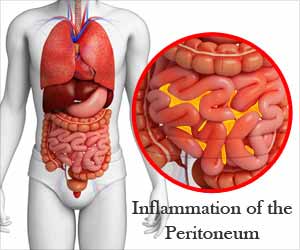Proteus peritonitis is a rare but severe form of intra-abdominal infection caused predominantly by Proteus mirabilis, a gram-negative bacillus known for its motility and resistance characteristics. This condition often arises in the context of secondary peritonitis, particularly following gastrointestinal perforation, urological procedures, or peritoneal dialysis. Understanding its pathogenesis, risk factors, diagnostic approach, and optimal therapeutic management is essential to improving clinical outcomes.

Microbiological Characteristics of Proteus mirabilis
Pathogenic Mechanisms in the Peritoneal Cavity
Proteus mirabilis is a facultative anaerobe that expresses several virulence factors facilitating its pathogenicity in peritonitis:
- Flagella-mediated motility: Aids in spreading across peritoneal surfaces.
- Urease enzyme: Alters pH and contributes to tissue irritation.
- Biofilm formation: Enhances resistance to phagocytosis and antibiotics.
- Endotoxins: Trigger systemic inflammatory responses, potentially leading to sepsis.
These factors enable the organism to colonize the peritoneal cavity and initiate a robust inflammatory response.
Routes and Risk Factors of Infection
Predisposing Clinical Conditions
Proteus peritonitis typically arises as secondary or tertiary peritonitis due to an existing source of intra-abdominal contamination. Common risk factors include:
- Peritoneal dialysis (PD): Particularly with improper technique or contaminated equipment
- Urinary tract infections with vesicoperitoneal fistula
- Gastrointestinal tract perforations
- Intra-abdominal abscesses
- Recent abdominal surgery or instrumentation
- Immunosuppression or diabetes
The bacteria may enter the peritoneal space via hematogenous spread, direct extension, or through perforation-related leaks.
Clinical Presentation and Symptom Complex
Hallmarks of Proteus-Induced Peritonitis
Patients with Proteus peritonitis often present with:
- Acute abdominal pain and tenderness
- Guarding and rebound tenderness upon palpation
- Fever and systemic toxicity
- Nausea, vomiting, and anorexia
- Altered bowel habits (constipation or diarrhea)
- Cloudy peritoneal dialysis effluent (in PD patients)
In severe cases, signs of septic shock, hypotension, and multiorgan failure may develop rapidly.
Diagnostic Evaluation
Laboratory and Imaging Modalities
Accurate diagnosis requires integration of clinical findings with microbiological and radiological evaluations.
- Peritoneal fluid analysis: Key to detecting gram-negative bacilli and neutrophil predominance.
- Culture and sensitivity: Determines specific Proteus strain and antibiotic resistance profile.
- Imaging (CT scan): Detects underlying abscesses, perforation, or fistulas.
Antimicrobial Treatment and Supportive Care
Empirical and Targeted Therapeutic Regimens
Initial therapy should be broad-spectrum, later refined based on culture results:
- Empirical therapy:
- Piperacillin-tazobactam or cefepime with metronidazole
- Carbapenems in resistant cases
- Targeted therapy for Proteus mirabilis:
- Ceftriaxone or ciprofloxacin, adjusted based on MIC data
- Duration: Typically 10–14 days, or extended in complicated cases
Adjunctive Management
- Source control: Drainage of abscesses, repair of perforations
- IV fluids and electrolyte correction
- Analgesia and antipyretics
- Nutritional support for prolonged cases
Complications and Prognosis
Potential Outcomes of Delayed or Inadequate Treatment
- Sepsis and septic shock
- Multi-organ dysfunction syndrome (MODS)
- Persistent intra-abdominal abscess
- Peritoneal fibrosis in PD patients
- Mortality, especially in immunocompromised patients or with delayed intervention
Early identification and aggressive management are critical to improving survival rates.
Preventive Strategies and Clinical Monitoring
Prevention in At-Risk Populations
- Strict aseptic technique in peritoneal dialysis
- Early treatment of UTIs to prevent translocation
- Prompt surgical intervention in gastrointestinal perforations
- Routine follow-up and peritoneal dialysis training
Healthcare professionals should maintain a high index of suspicion in vulnerable patients presenting with signs of peritoneal irritation, particularly when recent urological or gastrointestinal interventions are involved.
Proteus peritonitis is a high-stakes medical emergency that requires rapid diagnostic confirmation and decisive therapeutic action. As Proteus mirabilis can swiftly escalate to severe sepsis and peritoneal complications, healthcare providers must integrate microbiological vigilance with surgical and medical management. Through timely interventions and preventive care, the risks associated with this aggressive pathogen can be substantially mitigated.